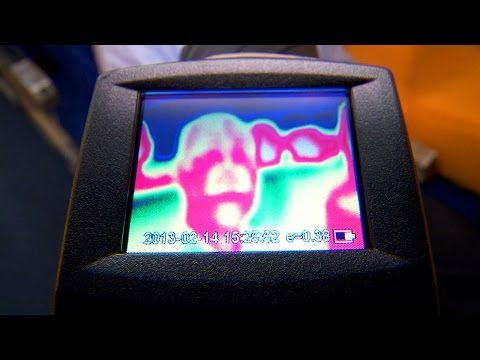Cabin Fever: How Coughs And Sneezes Help Germs Travel Aboard An Airplane

Airplane travel can be a serious health hazard — seatbelt buckles, tray tables, and overhead air vents are teeming with bacteria that can and is often transferred to passengers. But if you’re not touching any of these dirty surfaces and a passenger a few rows ahead coughs or sneezes, should you be worried you’re about to get sick? A recent video from BBC One’s Bang Goes the Theory doesn’t think so.
Show co-host Maggie Philbin ventured to a state of the art testing facility in Germany, where they had a “massive low-pressure chamber” capable of simulating airplane conditions when it’s 30,000 feet in the air. Within this chamber was a real airplane cabin encased in a temperature controlled system that allowed experts to work out how the flow of air can affect the movement of germs. The chamber also had heated dummies in place to recreate natural body heat, as well as a human volunteer to do the actual coughing.
Philbin saw that coughs move in currents: When the volunteer coughs, the particles don’t appear to move that far. Instead, the movement of air carries most coughs and sneezes toward the floor, where they’re then extracted from the cabin.
She explained that the air on an airplane is refreshed “roughly every two to three minutes.” This is compared to an office, where air is refreshed every five to 10 minutes; it’s as long as 20 minutes in a movie theater. So Philbin concludes that "touching contaminated people and surfaces is a greater risk than breathing the same air." For more of how your physical health is affected on airplanes, click here.
You can watch the full simulation in the video above.
Published by Medicaldaily.com



























